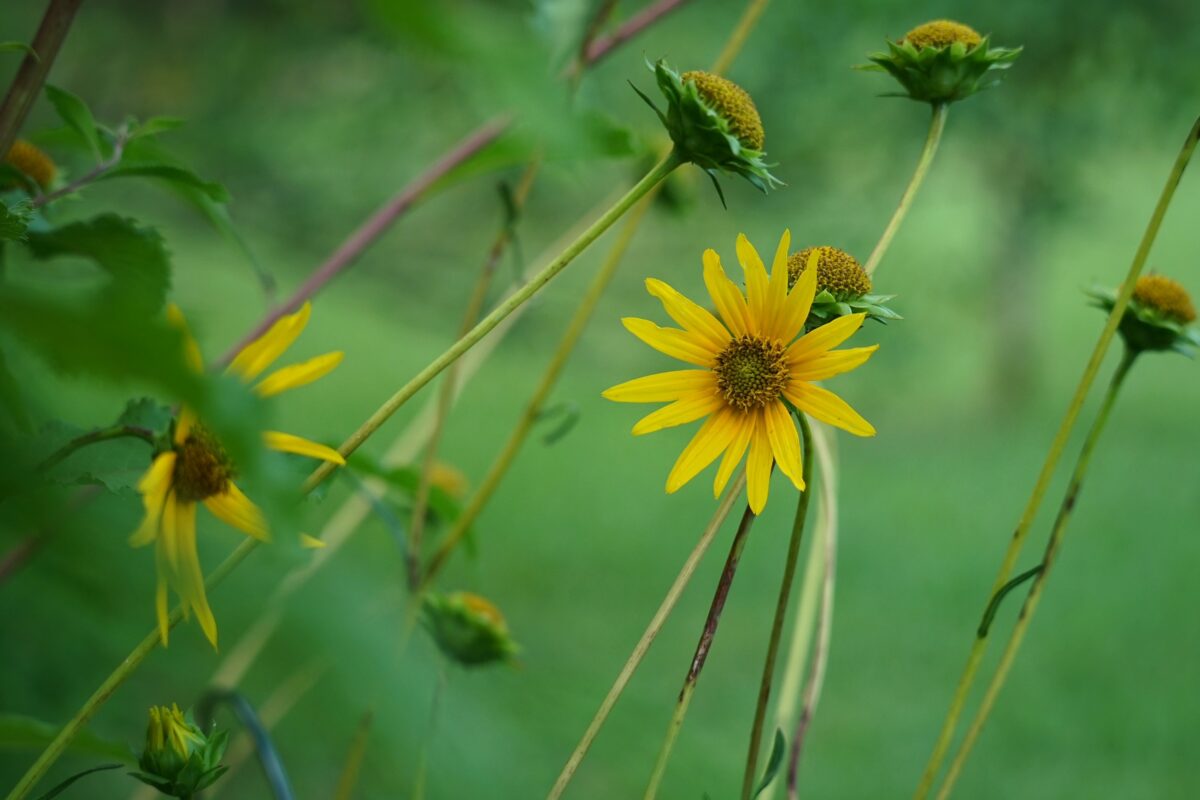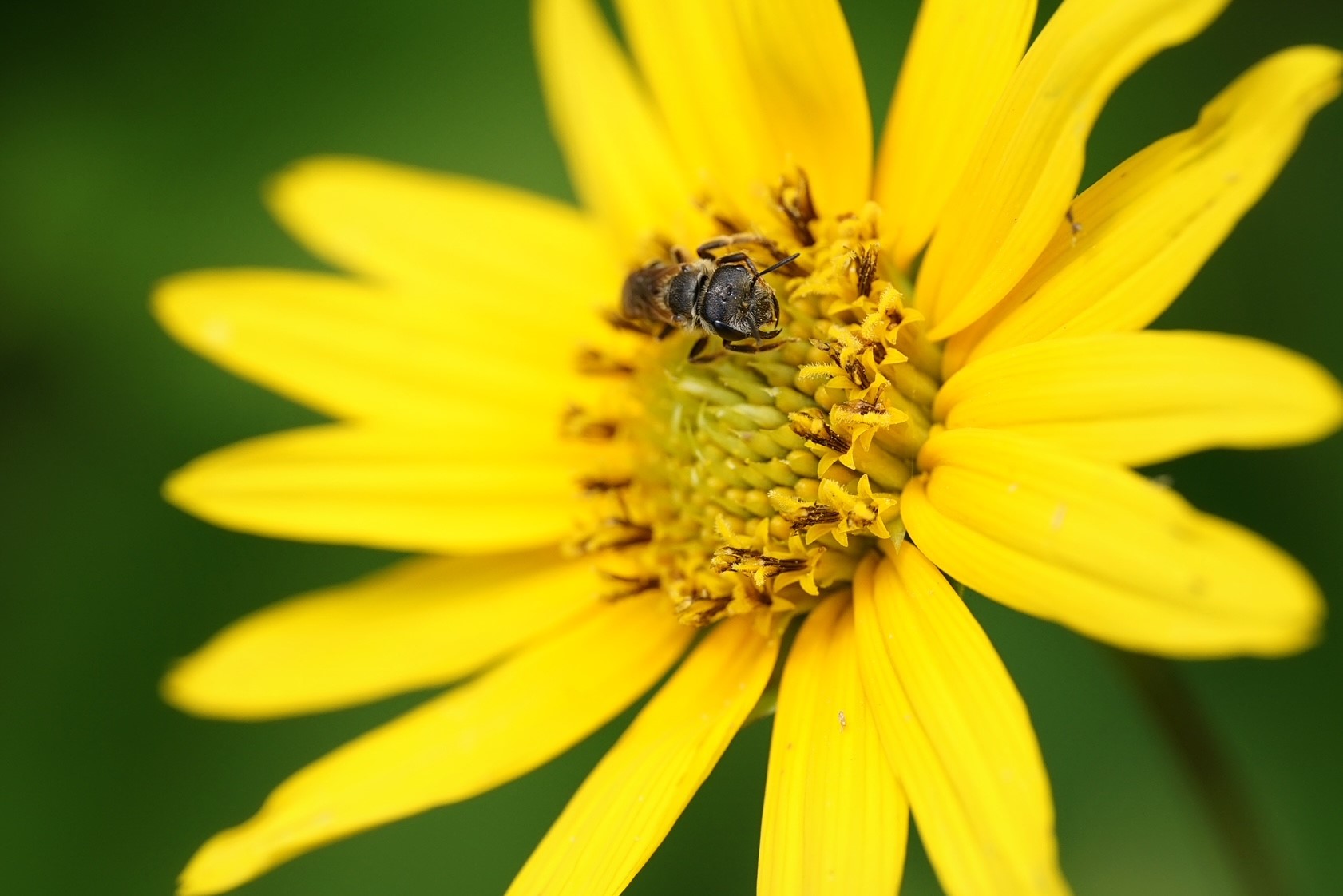Lakeside sunflower
Pictured above: Lakeside sunflower (Helianthus carnosus) by Emily Bell. Click on terms for botanical definitions. View post as a PDF.
Lakeside sunflower (Helianthus carnosus) is a perennial wildflower endemic to northeast Florida that inhabits open sunny edges of lakes and marshes. The beautiful bright yellow flowers attract a variety of bees, butterflies and beetles, and the seeds are eaten by birds.
Its compound flowerhead consists of 12–17 yellow slender ray florets and 100+ yellow to green disc florets. Solitary flowerheads are born on a glabrous erect stem emerging from a basal rosette of long (2-8 in.), slender, strap-like leaves. Stem leaves are smaller than basal leaves, sparse and alternate. Seeds are in a cypsela structure typical of the aster family and are around .3 cm in length.

Although rare even within its limited range and listed as state-endangered, Lakeside sunflower does well in cultivation and is available from nurseries specializing in native plants. The species epithet carnosus is derived from the Latin carnis meaning fleshy, which is likely in reference to the thick, almost succulent texture of the leaves.
Family: Asteraceae (Aster, composite or daisy family)
Native range: Endemic, reported from Duval south to Volusia counties and west to Clay and Putnam counties
To see where natural populations of Lakeside sunflower have been vouchered, visit florida.plantatlas.usf.edu.
Hardiness zone: 9A–9B
Lifespan: Perennial
Soil: Sandy, organic peat
Exposure: Full to part sun
Growth Habit: Low growing basal leaf cluster, flower stalks up to 3’
Propagation: Seed
Garden tips: This plant is well-suited for the edges of a mixed wildflower bed in moist to occasionally dry areas. For most of the year, it presents as a low cluster of narrow green leaves, but produces numerous attractive flowers from June through August
Plants are occasionally available from nurseries that specialize in Florida native plants. Visit www.plantrealflorida.org to find a nursery in your area.

